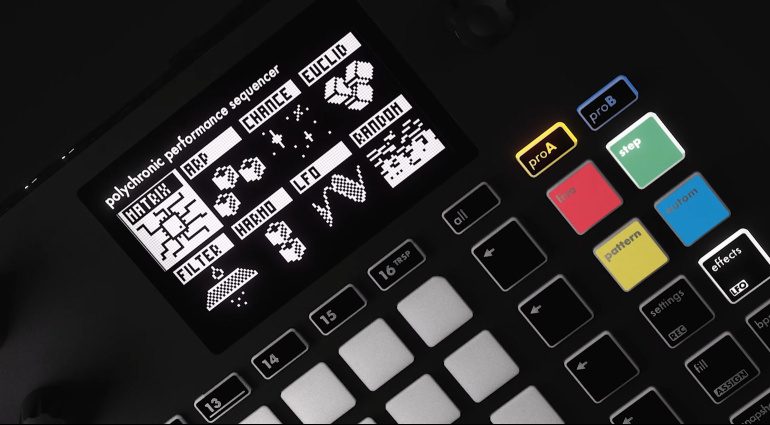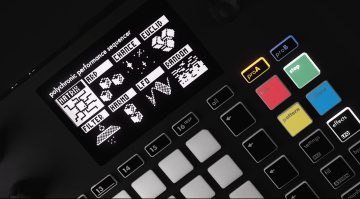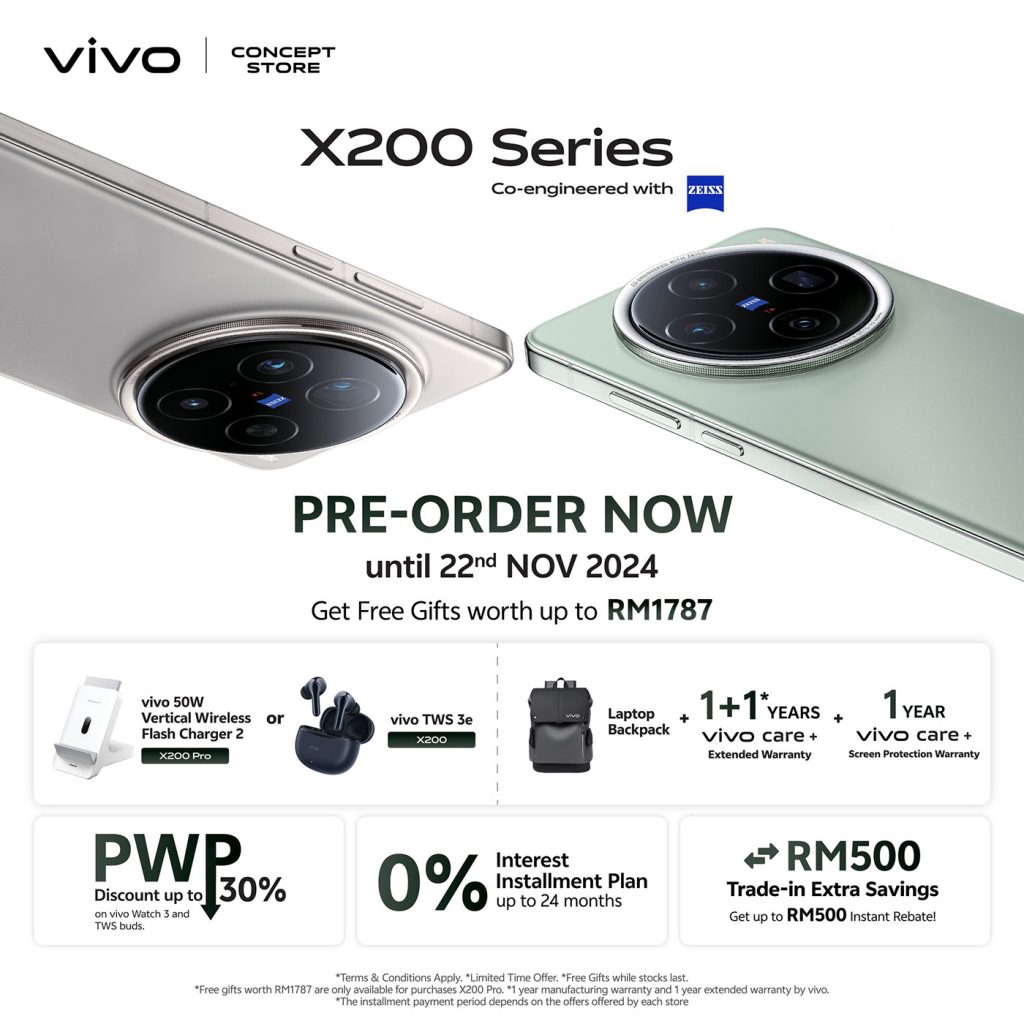If you’re looking to create and perform music without the help of a laptop, you’re in for a treat. We’re looking at some of the best hardware sequencers to switch up your workflow.
So what’s the difference between a sequencer and a groovebox? Well, a groovebox provides multiple channels of sound generation and pattern creation capabilities in a standalone device.
Sequencers, on the other hand, offer multiple channels of MIDI and CV control and require additional modules, synthesizers, or drum machines to complete the creative cycle.
Choosing the Best Hardware Sequencers
By using a sequencer you give yourself a central hub for all creative operations in your studio setup. Not only does this make working with multiple instruments more convenient, but it also gives your music a particular feel.
From the early computer-based sequencers like Amiga or UMI on the BBC Micro to hardware units like the SND RAM-16 and the Sequentix Cirklon, artists have loved these creative tools throughout their existence in the history of recorded music.
Because they do not generate sound, it’s much harder to call one sequencer better than another. They simply provide a different creative platform that can elevate your process as a music producer or performing artist.
Arturia Beatstep Pro
With its versatility and straightforward interface, it’s no wonder the Beatstep Pro is still one of the most popular sequencers. As you alter and upgrade your setup, it remains central to your workflow with 2 independent sequencers and a dedicated drum section.
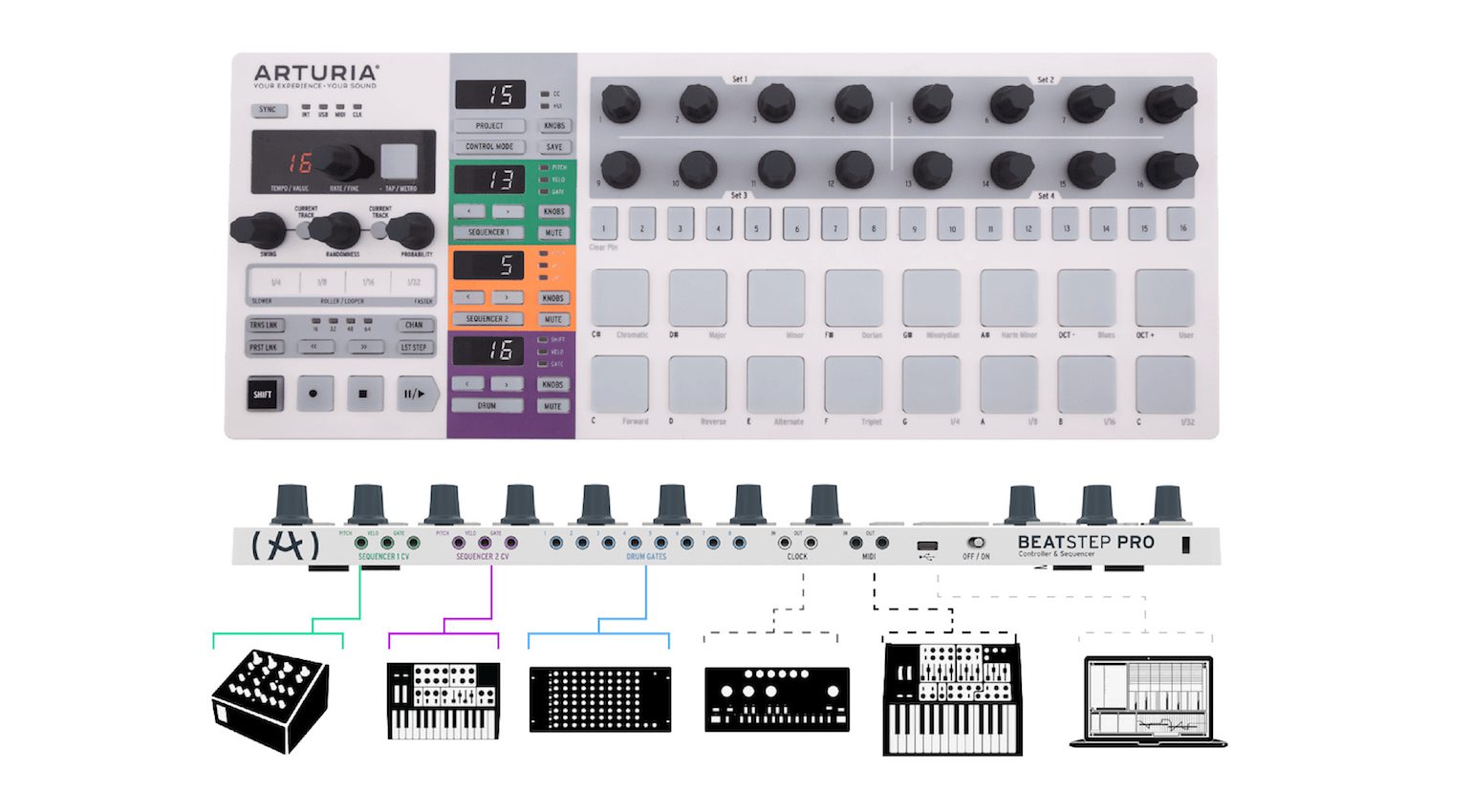
From controlling MIDI to DIN Sync devices, Eurorack modules, and even plug-ins within your DAW the Beatstep Pro provides a fluid platform for generating new ideas.
Doepfer Dark Time
The Dark Time gives you that quirky, vintage analogue approach and a feel you certainly won’t get from sequencing your drum and synth patterns in a DAW.
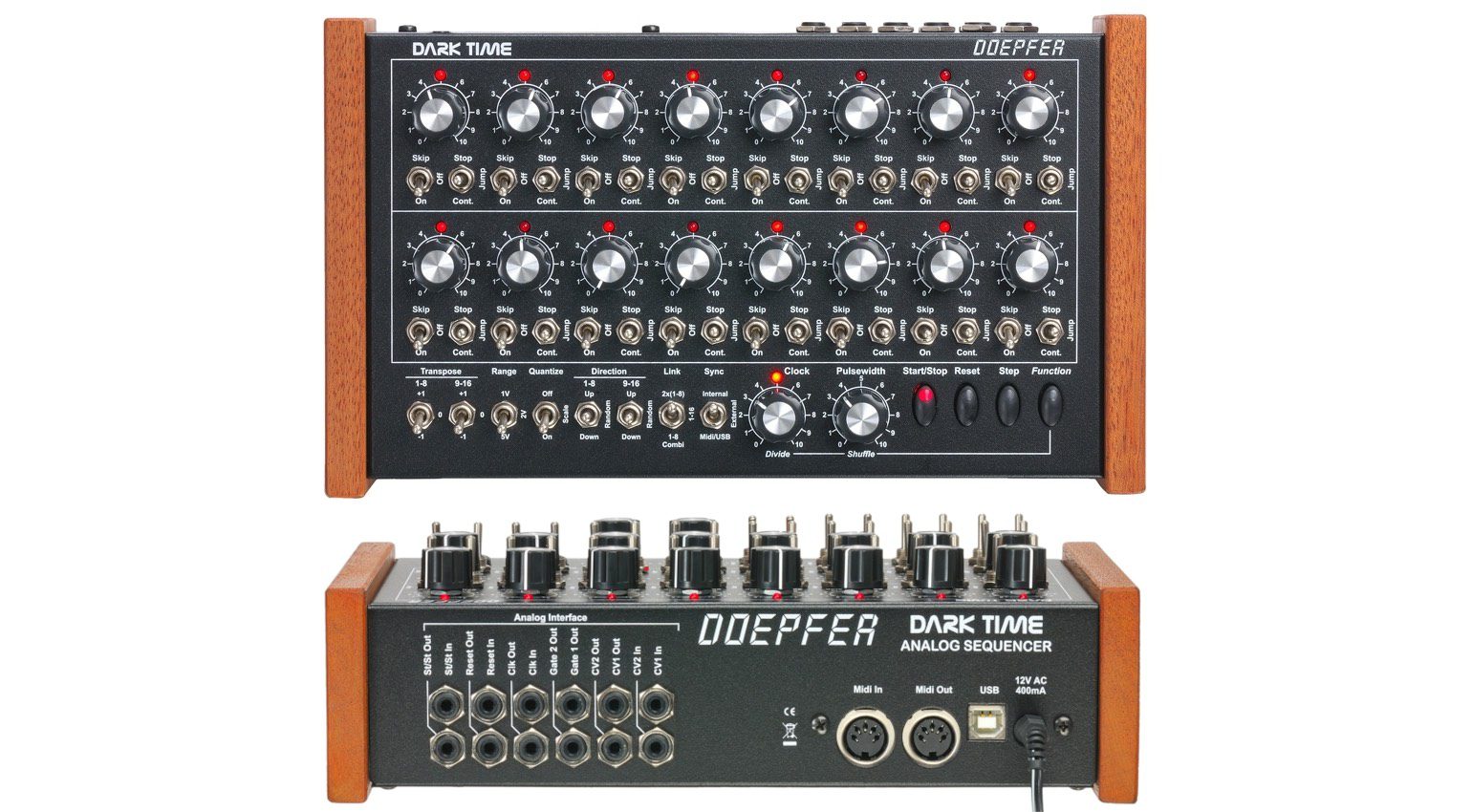
Although you might find the interface quite alien at first, it grows on you steadily and actually provides an intuitive system for creating patterns with the room to make mistakes, which is everything you want in a sequencer.
Erica Synths Black Sequencer
If you’re planning to do everything from within your Eurorack rig, the Erica Synths Black Sequencer is a 64-step pattern sequencer in a 42 HP module with pitch CV, mod CV, and gate outputs for each of the 4 tracks.
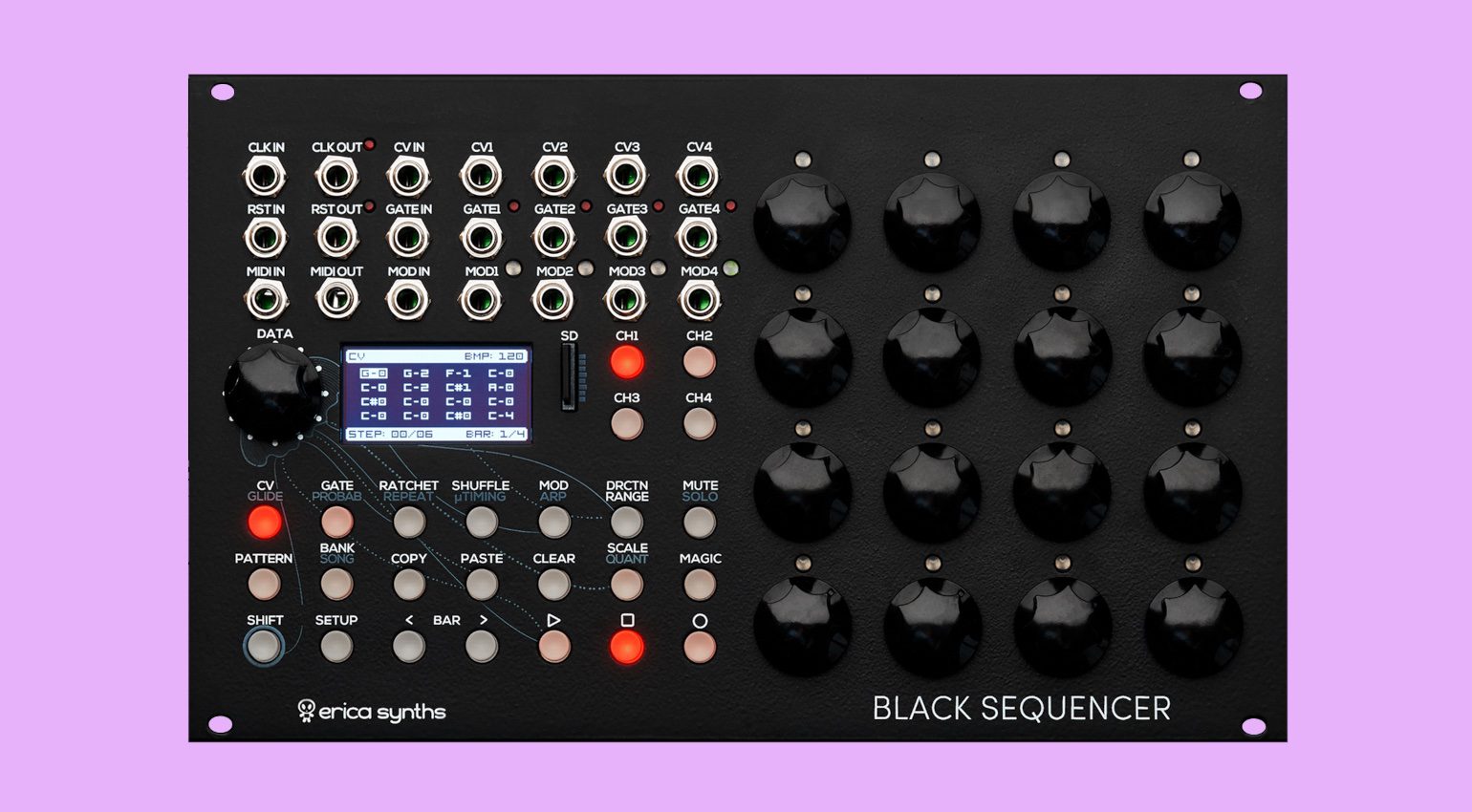
The 16 encoders make it more versatile, with the ability to control values manually. In addition, the Black Sequencer has per-step parameters like note value, glide, gate time, modulation, probability, repetitions, and ratcheting.
OXI Instruments One
The OXI One is a compact performance sequencer with extensive editing capabilities. Each of its 4 sequencers can run in mono mode, 8-voice chord mode, 8-track multitrack mode, 7-voice polyphonic, or stochastic mode.
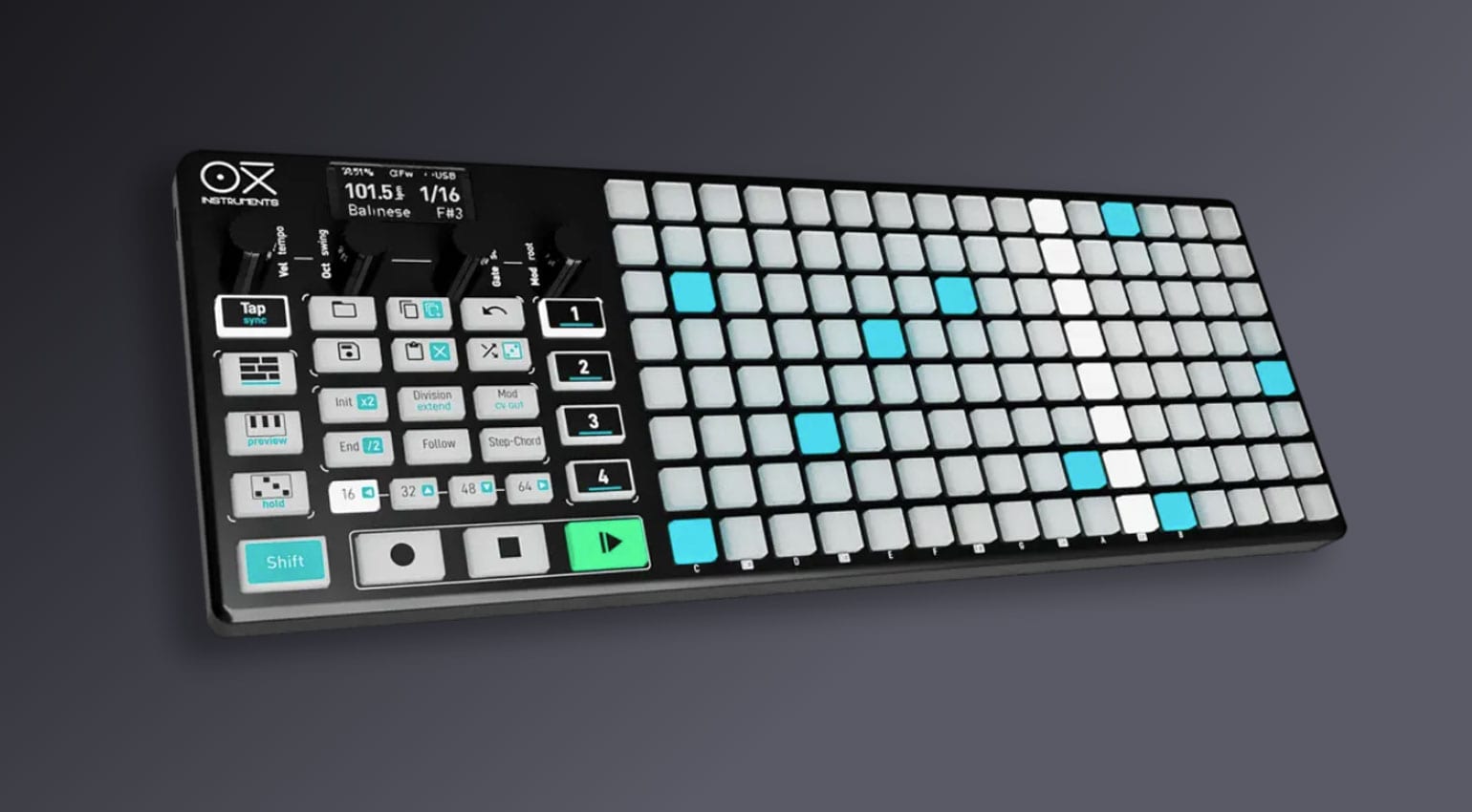
There is a wide range of parameter controls, with features like step probability as well as an LFO and 4 modulation tracks per sequencer. What’s more, the One provides MIDI-to-CV and Bluetooth 5.0 and it can be expanded with the OXI Pipe module and the Split box.
Elektron Octatrack MKII
The Octatrack is the central hub of many artists’ setups for both music production and live performance. It combines a beat-centric sampler with a powerful sequencer, giving you simultaneous playback of 8 tracks of audio and 8 MIDI tracks.
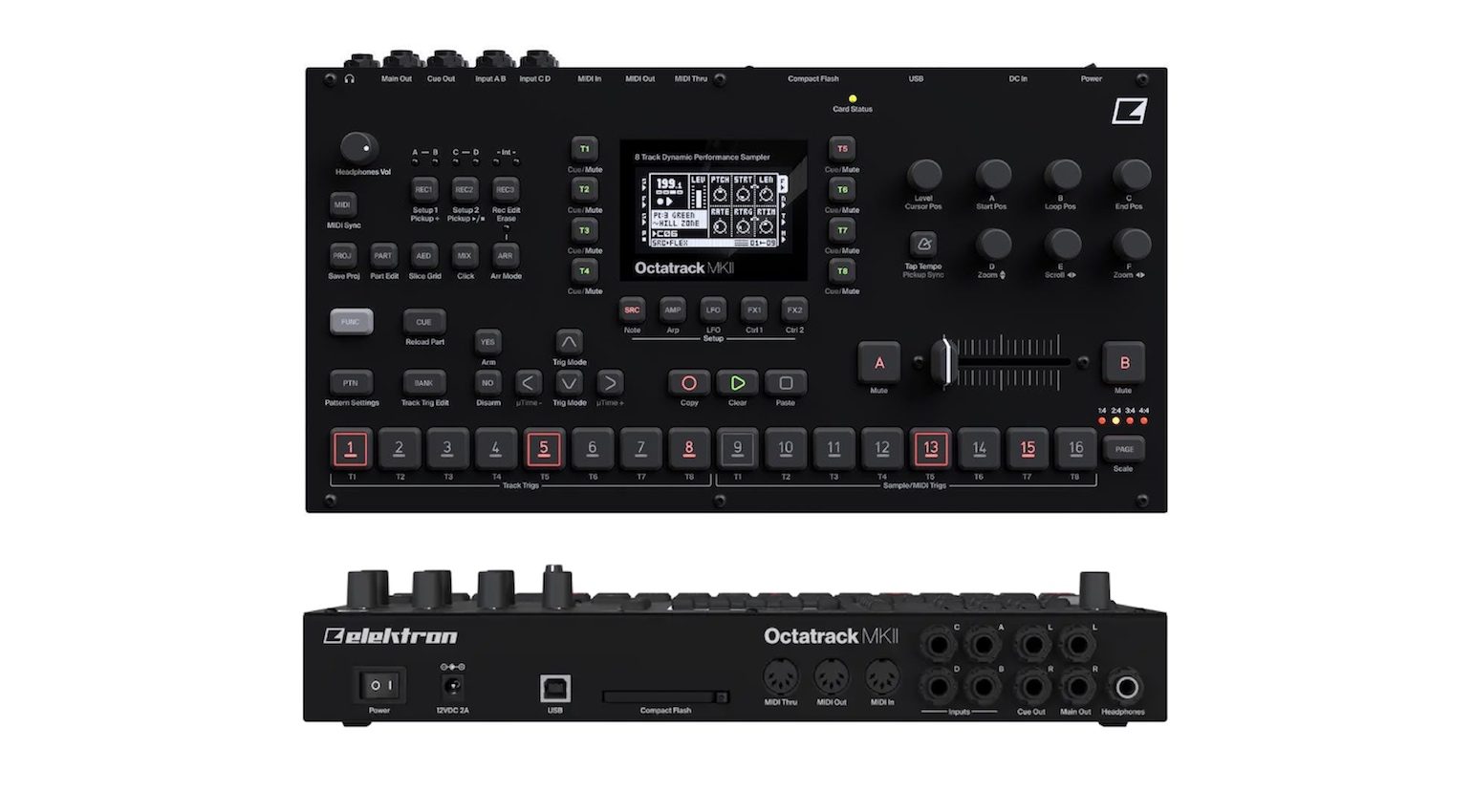
Due to the fact that it offers multiple workflows, the Octatrack is a little more involved than the others mentioned here. It also functions as a standalone instrument, which adds a great deal of value.
Also worth checking out:
More about the Best Hardware Sequencers:
*Note: This article about the best hardware sequencers contains affiliate links that help us fund our site. Don’t worry: the price for you always stays the same! If you buy something through these links, we will receive a small commission. Thank you for your support!

